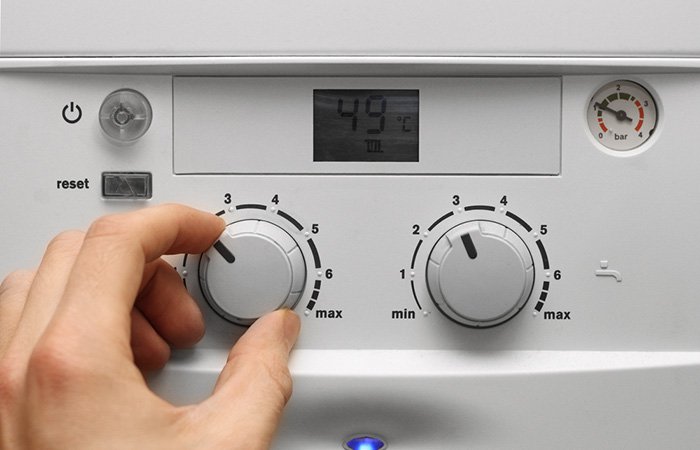Here are some practical tips:
Boiler pressure is a very important aspect when it comes to heating. It is therefore important to know how to manage it correctly. Pressure is like fire: if you handle it properly, it will yield good things for you. If it’s handled poorly, however, it can bring you some nasty surprises. Knowing how to lower your boiler’s pressure is one of the most useful and practical things you can learn. Modern boiler machinery has in-built safety mechanisms so that whenever there is too much pressure in the boiler, it can be lowered by the user. This article will show you how to lower your boiler’s pressure and how you can ensure that it always keeps the temperature in your home comfortable.
Tips for lowering the pressure in your boiler
Normal pressure in a domestic boiler is between 1 and 2 bars. Whenever you need to lower the pressure in your boiler, follow the tips we give below so that you can resolve the problem yourself. If, after following these tips, you still cannot lower your boiler’s temperature, we recommend that you, first of all, turn it off to avoid any safety risks. After that, you should call in a boiler professional. Here are our tips:
The easiest tip: turn your boiler off
This may seem obvious, but it is not always the case. The most basic solution when your boiler’s pressure is too high is to simply turn it off (for a period of around 3 hours). Turning the boiler off often corrects the excess pressure almost as if by magic. Then, when you turn the boiler on again, you may notice that the pressure is fine again and that the problem was temporary. This trick, however, does not always work.

Bleed the radiator closest to the boiler
It is recommended that you bleed your boiler’s radiators at least once a year. If you have not done this, it is likely that there is air within the heating circuit, and this can be what is causing the boiler pressure to rise. A sign that the problem may be due to congested radiators is that when the boiler is turned on, the radiator makes hissing sounds.
Radiators can often become congested, and this normally happens when the boiler hasn’t been used in a while. The beginning of the winter season is, therefore, the best time to bleed the radiators as it is going to be very busy after a long period of inactivity.
To check if the radiators are causing the boiler pressure to rise, the first thing you should do is locate the radiator that is closest to the boiler, and then proceed to bleed it. You can also specifically start with the boiler that is making the noise.

Turn off the boiler, and then wait a bit so that the water is not too hot. Use the special bleeding instrument that came with your boiler, and place a container underneath so that you won’t have to clean up spilled water afterward. (For more details on how to bleed radiators, we recommend you read our article on the topic).
If you manage to lower the pressure by bleeding the radiator, eureka! You have just rectified the problem. Another point to note: it will probably help if you bleed the other radiators as well. This will allow the heating to work optimally and the boiler to save fuel. Your bank balance will thank you.
If your radiators are damaged, click on this link to purchase spare radiator parts (panels, bleeders, caps, gaskets, bushings, etc) you need from the Suner store.
Fill, repair or replace the expansion vessel
The expansion vessel is one of the most important parts directly regulating pressure. Its ductile internal membrane constantly experiences rising pressure and this is how it keeps the pressure under control. This is, however, also why the expansion vessel’s membrane experiences continuous stress, and why you may need to repair or replace it.
Refilling the expansion vessel involves replenishing the internal gas that it may have lost; repairing it involves mending the membrane, which can often be cracked or punctured. These measures, however, only treat the symptoms and are not proper solutions. The proper solution with a malfunctioning expansion vessel is to replace it with a new one.
To check the expansion tank, refill it with gas or repair it, you can follow the step-by-step advice given in this article. If, on the other hand, you want to replace it with a new part, you can find an expansion vessel spare part for sale in the Suner store. The ones available at Suner are original expansion vessels and have been manufactured according to the highest quality by wall boiler brands, such as Roca, Junkers, Ferroli, Beretta, Vaillant, and more.

Open the safety or overpressure valve
Opening the safety valve (also known as the “overpressure valve”), is a very effective solution, but you need to be aware of something beforehand: before opening the safety valve to lower the pressure, turn the boiler off and give it a bit of time for the water to cool down. The water can come out in an uncontrolled and random way, and since it is very hot, it can cause burns.
Close the filling valve and open the drain valve
Ensure that the filling valve is closed (to avoid unintentional filling and a consequent pressure increase), and then open the drain valve. This advice will vary according to the make or design of your boiler. For instance, if you wanted to lower the pressure in a Junkers boiler, you should note that these boilers do not have a drain cock, so this solution would not apply to these brands of boiler.


